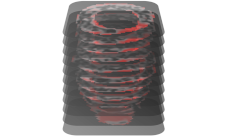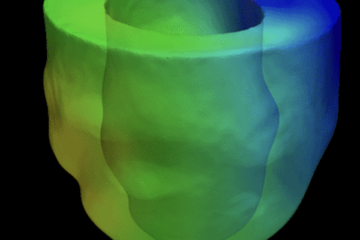Trayanova Lab Publishes Precision Ablation Study in Nature Cardiovascular Research
Trayanova Lab Publishes Precision Ablation Study in Nature Cardiovascular Research
The Trayanova Lab at Johns Hopkins University is excited to announce the publication of our latest research in Nature Cardiovascular Research, “Assessing the arrhythmogenic propensity of fibrotic substrate using digital twins to inform a mechanisms-based atrial fibrillation ablation strategy,” (direct link to the article here)
Cardiac ablation is the use of a catheter via the vasculature to burn parts of the heart that are causing problematic electrical activation patterns, “arrhythmias.” Led by first author Kensuke Sakata, the study explores a novel approach to cardiac ablation. The research uses detailed “digital twin” computational models derived from medical images of patients’ hearts to simulate both arrhythmias and the effects of cardiac ablation lesions on the arrhythmias. This groundbreaking research highlights the application of detailed analysis of ablation lesion placement, allowing for more accurate targeting of problematic heart tissue with the need for fewer ablation lesions. The modeled improvements show the potential to reduce the number of ablation lesions applied, the procedure time to deliver the therapy, and the need for repeat procedures. These effects combined have the potential to significantly reduce the risk of complications and improve outcomes.
The publication of this prospective observational study in Nature Cardiovascular Research underscores the scientific merit and potential impact of our work, paving the way for further exploration and refinement of computational models in cardiology. The study was completed in collaboration with clinical cardiac electrophysiologists at the Johns Hopkins School of Medicine, who lent their skill and expertise in atrial ablation, as well as invaluable guidance on clinical practice.
Whiting School of Engineering Press Release: Hitting the Target for Successful Heart Ablation


